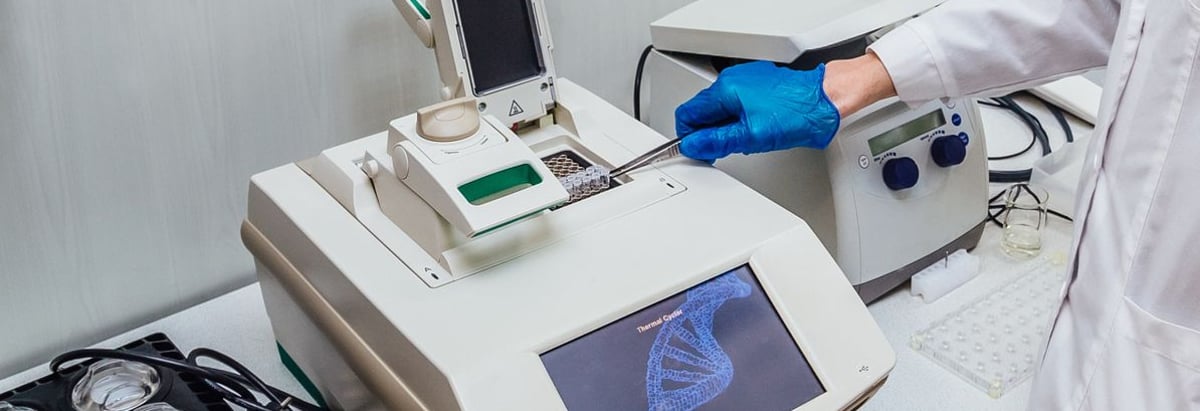Stock Analysis
- France
- /
- Life Sciences
- /
- ENXTPA:DIM
Does Sartorius Stedim Biotech (EPA:DIM) Have A Healthy Balance Sheet?

Warren Buffett famously said, 'Volatility is far from synonymous with risk.' So it seems the smart money knows that debt - which is usually involved in bankruptcies - is a very important factor, when you assess how risky a company is. We can see that Sartorius Stedim Biotech S.A. (EPA:DIM) does use debt in its business. But should shareholders be worried about its use of debt?
When Is Debt A Problem?
Generally speaking, debt only becomes a real problem when a company can't easily pay it off, either by raising capital or with its own cash flow. Ultimately, if the company can't fulfill its legal obligations to repay debt, shareholders could walk away with nothing. However, a more usual (but still expensive) situation is where a company must dilute shareholders at a cheap share price simply to get debt under control. Of course, debt can be an important tool in businesses, particularly capital heavy businesses. The first step when considering a company's debt levels is to consider its cash and debt together.
See our latest analysis for Sartorius Stedim Biotech
What Is Sartorius Stedim Biotech's Debt?
As you can see below, at the end of June 2024, Sartorius Stedim Biotech had €2.81b of debt, up from €1.25b a year ago. Click the image for more detail. On the flip side, it has €454.1m in cash leading to net debt of about €2.36b.
How Healthy Is Sartorius Stedim Biotech's Balance Sheet?
The latest balance sheet data shows that Sartorius Stedim Biotech had liabilities of €873.8m due within a year, and liabilities of €3.27b falling due after that. Offsetting these obligations, it had cash of €454.1m as well as receivables valued at €379.9m due within 12 months. So it has liabilities totalling €3.31b more than its cash and near-term receivables, combined.
Of course, Sartorius Stedim Biotech has a titanic market capitalization of €17.0b, so these liabilities are probably manageable. But there are sufficient liabilities that we would certainly recommend shareholders continue to monitor the balance sheet, going forward.
We measure a company's debt load relative to its earnings power by looking at its net debt divided by its earnings before interest, tax, depreciation, and amortization (EBITDA) and by calculating how easily its earnings before interest and tax (EBIT) cover its interest expense (interest cover). Thus we consider debt relative to earnings both with and without depreciation and amortization expenses.
Sartorius Stedim Biotech has a debt to EBITDA ratio of 3.6 and its EBIT covered its interest expense 2.6 times. Taken together this implies that, while we wouldn't want to see debt levels rise, we think it can handle its current leverage. Even worse, Sartorius Stedim Biotech saw its EBIT tank 48% over the last 12 months. If earnings continue to follow that trajectory, paying off that debt load will be harder than convincing us to run a marathon in the rain. The balance sheet is clearly the area to focus on when you are analysing debt. But it is future earnings, more than anything, that will determine Sartorius Stedim Biotech's ability to maintain a healthy balance sheet going forward. So if you want to see what the professionals think, you might find this free report on analyst profit forecasts to be interesting.
Finally, while the tax-man may adore accounting profits, lenders only accept cold hard cash. So we always check how much of that EBIT is translated into free cash flow. Looking at the most recent three years, Sartorius Stedim Biotech recorded free cash flow of 29% of its EBIT, which is weaker than we'd expect. That weak cash conversion makes it more difficult to handle indebtedness.
Our View
We'd go so far as to say Sartorius Stedim Biotech's EBIT growth rate was disappointing. But at least its level of total liabilities is not so bad. Looking at the bigger picture, it seems clear to us that Sartorius Stedim Biotech's use of debt is creating risks for the company. If everything goes well that may pay off but the downside of this debt is a greater risk of permanent losses. When analysing debt levels, the balance sheet is the obvious place to start. But ultimately, every company can contain risks that exist outside of the balance sheet. For example Sartorius Stedim Biotech has 4 warning signs (and 1 which is significant) we think you should know about.
When all is said and done, sometimes its easier to focus on companies that don't even need debt. Readers can access a list of growth stocks with zero net debt 100% free, right now.
New: Manage All Your Stock Portfolios in One Place
We've created the ultimate portfolio companion for stock investors, and it's free.
• Connect an unlimited number of Portfolios and see your total in one currency
• Be alerted to new Warning Signs or Risks via email or mobile
• Track the Fair Value of your stocks
Have feedback on this article? Concerned about the content? Get in touch with us directly. Alternatively, email editorial-team (at) simplywallst.com.
This article by Simply Wall St is general in nature. We provide commentary based on historical data and analyst forecasts only using an unbiased methodology and our articles are not intended to be financial advice. It does not constitute a recommendation to buy or sell any stock, and does not take account of your objectives, or your financial situation. We aim to bring you long-term focused analysis driven by fundamental data. Note that our analysis may not factor in the latest price-sensitive company announcements or qualitative material. Simply Wall St has no position in any stocks mentioned.
About ENXTPA:DIM
Sartorius Stedim Biotech
Engages in the production and sale of instruments and consumables for the biopharmaceutical industry worldwide.


